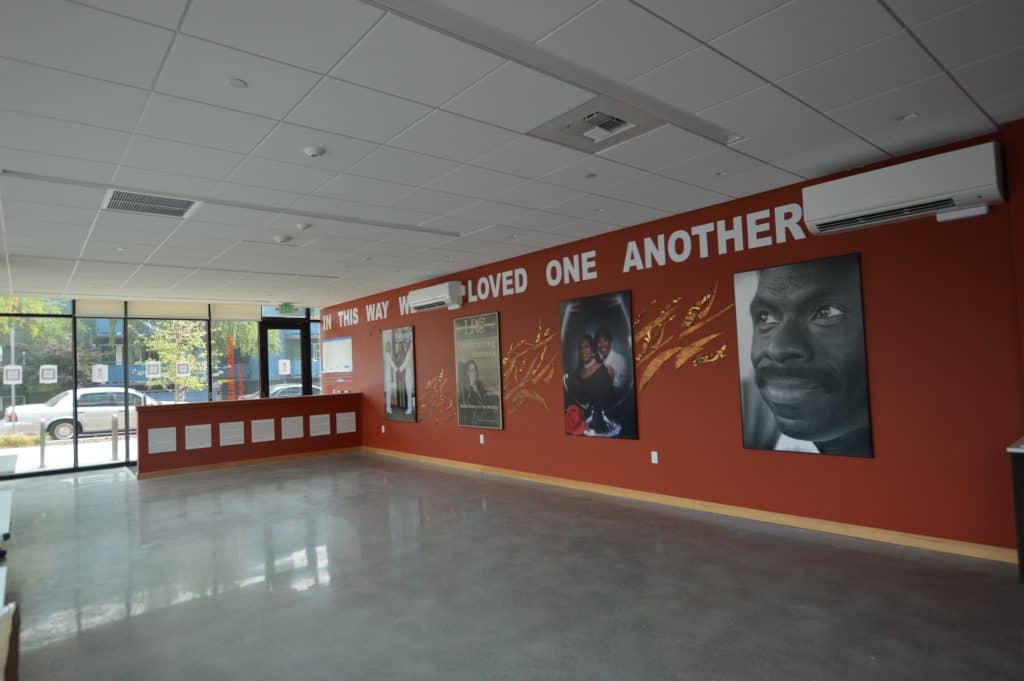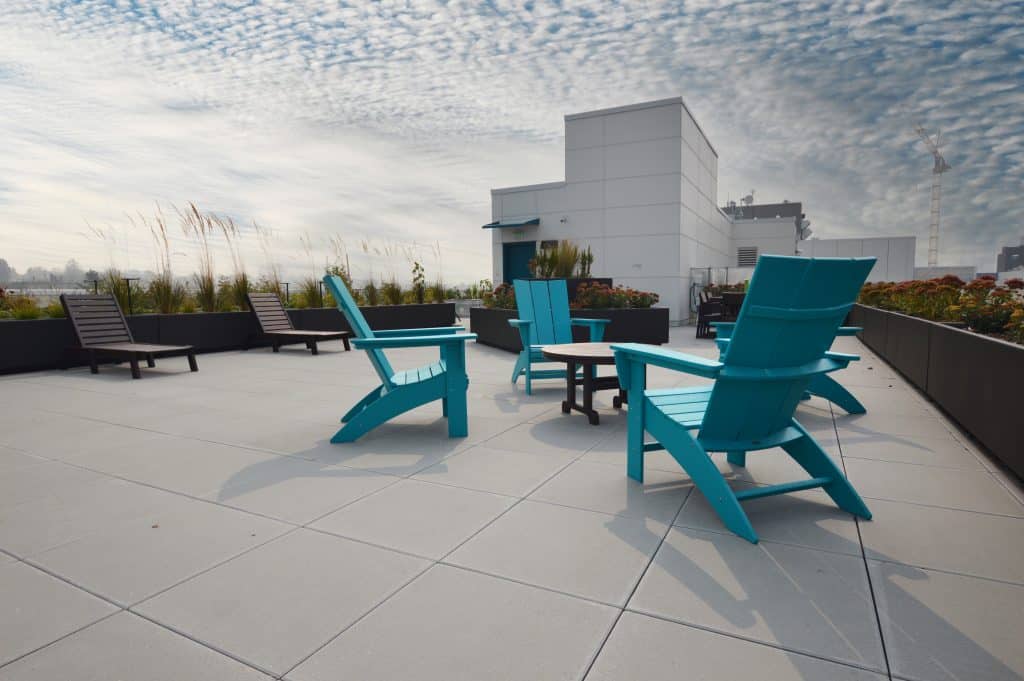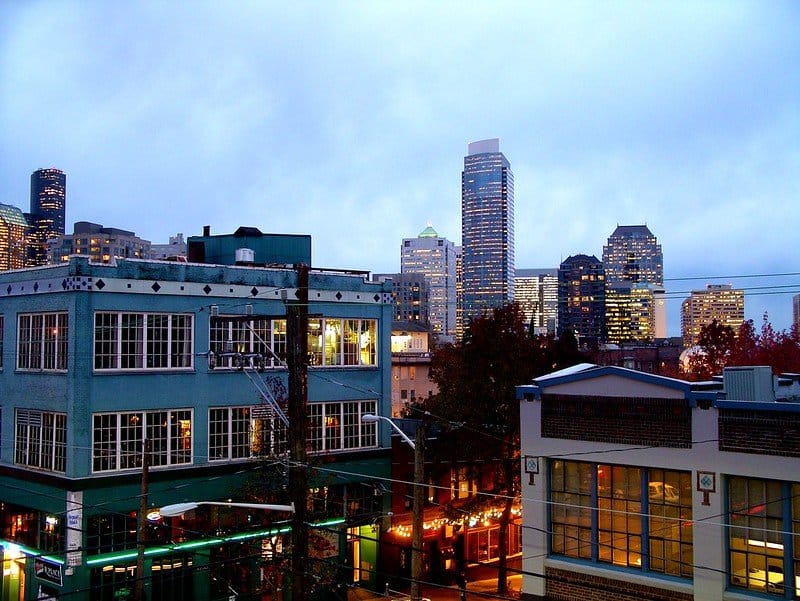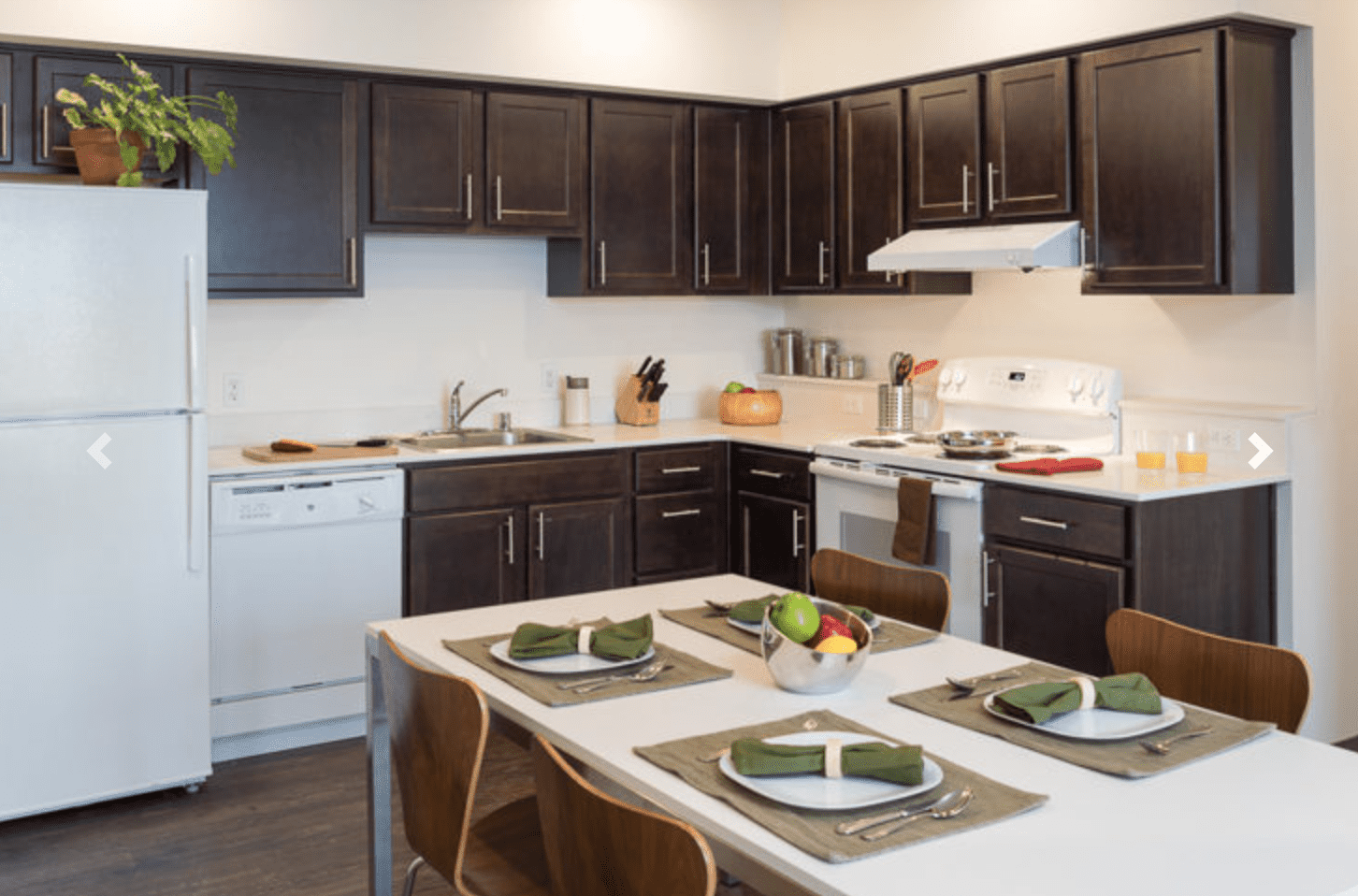When Mary found out she’d be living in the newly built Station House apartments, right in the heart of Seattle’s booming Capitol Hill neighborhood and directly atop a light rail station, she felt like she’d won the lottery.
Mary, who asked to be identified by only her first name, has lived in Seattle for 40 years, the last few in Capitol Hill in an older apartment with leaky pipes that had flooded her home on several occasions. In late 2019, her building manager told her the rent would increase by $400 a month, something Mary absolutely couldn’t afford as a ticket concierge at the Seattle Symphony.
“I was worried about finding somewhere I wanted to live,” she says. “I was looking into housing in areas adjacent to Seattle, like across the water in Bremerton. But with that you’re adding the time and cost of commuting and losing the convenience. Luckily, I didn’t have to make that choice.”
At Station House, Mary has traded a leaky roof for a rooftop garden plot with a view of Mount Rainier. The weekly farmers market is held at a plaza right next to the building. She’s a half-block from a huge park and within easy walking distance to all the shops, grocery stores and bars one could need. To get to work she walks 50 feet from the front door to the Capitol Hill Station, takes the train two stops to symphony hall, and walks upstairs to work. If she has what she calls “good train karma,” her commute takes all of six minutes.

It’s the kind of apartment that Seattleites pay through the nose for. But the 110-unit Station House isn’t expensive. It was built as affordable housing on land previously owned by Sound Transit, the regional transit agency that runs the area’s light rail system. That land was left over from when Sound Transit built the Capitol Hill station in 2016 — as is often the case with transit construction projects, once the station was completed, the agency was left with surrounding land it no longer needed.
Sound Transit leased 75 percent of that land for market rate apartments and sold the remaining 25 percent to an affordable housing developer called Community Roots Housing — at a deep discount. Rents at the complex are subsidized to be affordable for people earning 30 to 60 percent of the region’s median income, or $27,800 to $55,500 a year for a two-person household. At Station House, a one-bedroom is $1,267 a month. In the market-rate building next door, one-bedrooms go for between $2,700 and $3,300 a month.
Now that it’s complete, Station House has become a model that Sound Transit plans to replicate. In fact, it’s required to — shortly before Station House broke ground in 2018, the Washington State Legislature mandated that the agency repurpose the majority of its unused land for housing, and that the majority of that housing have subsidized, below-market rents. It’s a policy that ensures new transit projects will benefit low-income renters rather than pricing them out of the neighborhood.

“A world-class public transit system is useless to you if you can’t afford to live near it,” says Katie Wilson, general secretary of the Seattle Transit Riders Union, an activist group fighting for better transit for poor and working people. “In Seattle, low-wage workers and communities of color are pushed out to suburbs where bus service is often unreliable and infrequent. They’re forced to absorb the costs of car ownership, or they have to spend hours commuting to work by transit. That’s why we need transit agencies like Sound Transit to do everything in their power to site affordable housing near transit hubs.”
Transit is for everyone
The mandate for Sound Transit to use the bulk of its surplus land for affordable housing came amid a growing affordability crisis for Seattle and the surrounding region brought on by booming population growth.
“One of the fundamental human rights is to have a home, for God’s sake,” says State Representative Frank Chopp, whose district represents northeast Seattle. “We need transit-oriented development that doesn’t contribute to displacement of poor people. It’s already happened too much in Seattle.”
Chopp played a key role in crafting the legislation that compels Sound Transit to use its surplus land for affordable housing. Specifically, he helped create the law’s “80-80-80 policy,” which requires Sound Transit to use 80 percent of its surplus land for housing, and ensure 80 percent of that housing is affordable to people earning 80 percent or less of the area’s median income.
To accomplish this, the agency sells that land at a deep discount — or transfers it for free — to affordable housing developers like Community Roots. It’s a win-win-win concept that gives affordable housing developers access to pricey neighborhoods, mitigates the gentrification that flashy new transit projects can cause, and even helps bolster transit ridership in the process. As the agency builds out its second and third phases of light rail expansion over the coming years, it will have many more opportunities to replicate the work above the Capitol Hill station.
Crushed by negative news?
Sign up for the Reasons to be Cheerful newsletter.According to U.S. Census Bureau data, median rents in Seattle jumped 63 percent over the past decade, from $945 a month in 2011 to $1,544 today. Median home values rose from $378,000 in 2011 to $838,000 today, according to data compiled by Zillow. Meanwhile, the 2020 one-night count of homeless residents in Seattle and King County found 11,751 people experiencing homelessness countywide.
Seattle Office of Housing director Emily Alvarado says some of the surplus sites have let the city build affordable housing in neighborhoods they might not otherwise have been able to, and build project types that are typically harder to fund.
For instance, Sound Transit provided land at no cost for a 17-story project with approximately 112 units for formerly homeless seniors and 250 units for low income individuals and families. The First Hill site is directly across the street from one major medical center and a few blocks from a major hospital. “It allows for a health care connection that might not be able to be made in different neighborhoods,” says Alvarado.

Similarly, at the Roosevelt Station in north Seattle, Sound Transit provided land at a deep discount for 254 units of affordable housing, including 87 two- and three-bedroom units and an early childcare center. Larger units like that are harder to come by in affordable housing. By including family-sized apartments, the project will provide low-income families access to the expensive Roosevelt neighborhood and its high-ranked schools.
In addition to providing shelter, some of these projects are helping to reconcile long-standing injustices. For example, in southeast Seattle’s Rainier Valley, Sound Transit gave the city 12 small sites that it used for construction staging along the first phase of its new light rail line. The Office of Housing plans to fund development of at least 100 homes that people earning less than 80 percent of area median income can purchase.
The Rainier Valley was historically home to Black and immigrant communities barred from living in other parts of the city by racially restrictive covenants. Now, gentrification is leaving those communities in the real estate lurch once again. Though the area remains the city’s most diverse, Census data shows that in the last five years, whites became its largest racial group for the first time in generations. Alvarado says for the affordable homes, they will try to identify buyers who were displaced from the Rainier Valley or live there currently and are at risk of being displaced.
As part of the 80-80-80 policy, Sound Transit adopted a policy committing to “inclusive planning and decision‐making processes” for their surplus public land projects. In practice that has meant Sound Transit, the Office of Housing and the affordable housing developer have done significant outreach to try and create projects that meet the communities’ highest needs. In the Rainier Valley, communities wanted affordable homeownership opportunities. At the Roosevelt project, the two- and three-bedroom apartments came from a community desire for family housing.
“The problem with a lot of government action is they come in and say, ‘We’re the government and this is what we’re going to do,’ and that doesn’t go over very well,” says Rep. Chopp. “When the community is engaged they feel like part of the process and feel very proud about the project.”
Affordable housing, better transit
Sound Transit’s policy isn’t just good for the people lucky enough to snag a unit in one of these developments — it benefits the transit system itself.
There is evidence to suggest that affordable transit-oriented development helps boost ridership. In 2017, researchers from North Carolina State University and Denver’s Regional Transportation District surveyed residents’ market rate and affordable housing within a 10 minute walk of transit stations in Denver. They found that 69 percent of market rate residents most frequently used a personal vehicle to travel, while 66 percent of low-income residents most frequently used transit. They also found that 91 percent of market rate residents owned at least one vehicle, while only 47 percent of low-income residents did.
Alvarado says another reason Seattle has had success with 80-80-80 is that the opportunity to build is backed by funding from the city’s Housing Levy, a tax that provides affordable housing funding. “Free land in and of itself doesn’t make the project work,” she says. “You need to be intentional about creating additional housing resources and partnering those with funds that can invest in community spaces, and cultural spaces, and parks, and early childhood centers so we can bake community wellness into our urban landscape.”
Sound Transit isn’t alone in its effort to build affordable housing on surplus land. The Bay Area’s BART system has been building affordable housing at some station sites, including on surface parking lots at two stations in Berkeley. And Los Angeles Metro has a policy that 35 percent of the joint developments it builds on the land it owns must be affordable housing. Rep. Chopp says Metro’s policy was actually an inspiration for 80-80-80.
In 2016 voters approved a $54 billion funding package to expand Seattle’s light rail system. Over the coming decades, Sound Transit will build more than 35 new stations, creating dozens of new opportunities to build affordable housing like the Station House.
“Please tell them to build more, more and more,” says Mary. “I truly feel blessed to live in the Station House. … I think it’s paramount that we support building housing adjacent to transportation hubs.”







